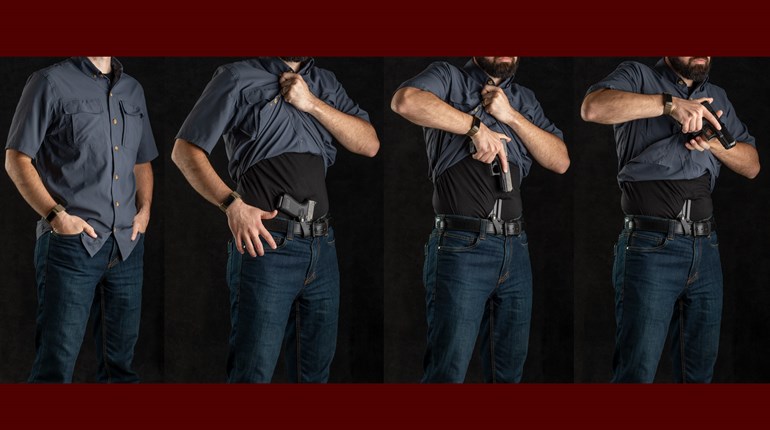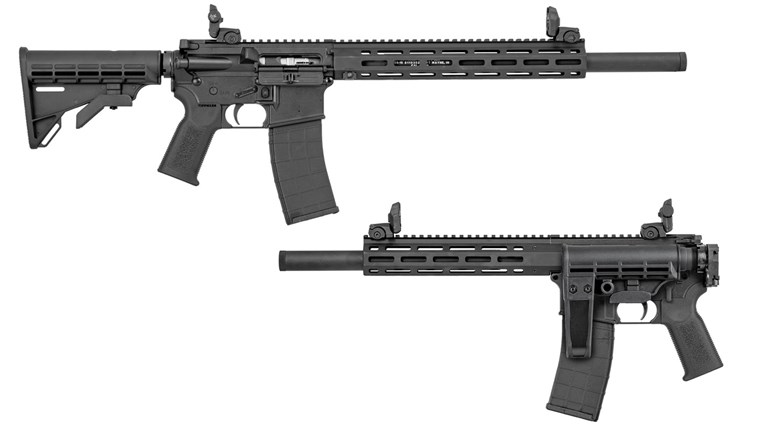
I get asked a lot what I think the best gun is for concealed carry. Many times, this question comes while in class, but in casual online conversations the question seems to becoming more popular. The answer is simple: The gun that is the most popular. Regardless of the criterion for selecting the ideal gun for concealed carry, popularity seems to trump practicality. Of course, popularity can be subjective, but for me it is what consumers are purchasing. More and more consumers are purchasing subcompact guns ideally suited for concealed carry. The only downside to these consumer selections is the inherit difficulty in shooting them well as a result of their smaller sizes.
Don’t get me wrong, I love most subcompact guns currently on the market. They have given many people the option of self-defense when other guns could not. When a new gun owner is shopping for their first gun, sometimes the only consideration is size. I don’t blame them, the vast majority of new shooters may not invest in formal instruction to know the pros and cons of a small-size gun. They may not even practice, much less practice regularly. They may only be looking for the peace of mind their purchase can bring. While it may not be the best start, it is still a step in the right direction.
The hope is the new gun owner will recognize such handguns shortcomings, put aside any preconceived notions and seek out qualified guidance. What we want to avoid is worrying about the purchase. What we don’t want to see is folks being talked down to regarding their choice. Sure, it may not be the best option—or what I might choose—but it is what they have. We have to work to get the new gun owner comfortable. The responsibility for criticizing the purchase is not mine to make. What is mine, is developing the skill at arms with what they have, which is what they intend to bring to the fight.
This leads us to the biggest obstacles to shooting subcompact guns well—the grip size, recoil control, sight system and trigger system. Some you can improve upon such as the sights or trigger. Subcompacts are notorious for having poor combat-style sights. As these subcompacts grow in popularity, sight manufacturers continue to adapt to consumer trends and offer upgraded options. The trigger is a bit more challenging. Few subcompacts come with a smooth trigger; many have a heavy and long trigger pull that requires a decent amount of time to master. Again, as consumer trends increase so too will aftermarket options for drop-in replacement triggers. A caution on trigger upgrades. Avoid any product that can compromise the internal safeties in any way. Be cautious in your selection. If it sounds too good to be true—you know the rest.

This leaves us with grip size and recoil control. By their nature, subcompacts are small. The smaller size makes them easier to conceal, but hard to hold and shoot well. I find some are better to grip than others. A common occurrence is when the pinky finger is left to dangle in the wind. A lot of people worry about this, but my comments are just the opposite. Don’t worry. If your pinky fits on the bottom of the frame, that is great. If not, don’t sweat it too much. Instead, curl your pinky so the magazine base can rest on the surface. It seems a little odd at first because we are used to wrapping the pinky around something. In this case, there is nothing, so don’t worry. You can still apply pressure with the other two digits and pull a little bit of power from the pinky if you can press it into the heel of your hand. There are, of course, aftermarket extensions for some magazines, but I find this technique works just fine. Under certain circumstances I actually prefer this technique rather than extending the profile of the gun with a grip extension. It kind of defeats the purpose of the subcompact when you increase the footprint, making the pistol more difficult to conceal.
Recoil control is a difficult subject to talk about using the printed word. It has to be experienced. The lighter frames and shorter slides will mean the recoil impulse can be more noticeable or pronounced. One technique I use to help mitigate recoil is described above, but the next one is seldom practiced. Press your heels together. Many shooters could benefit from this technique shooting a compact or full-size pistol, but especially shooting the subcompacts. What you are doing by this technique is putting more friction on the gun during recoil. The increased friction will help mitigate recoil. I’m not saying you need the same force you would use to crush a beer can. Just applying pressure inwardly will go a long way toward making a difference. The more heel pressure applied, the better your grip and control.

The cumulative effect of these techniques described is not just better performance, but a better experience. I find a new shooter who has a positive experience is far more likely to do it again with each subsequent positive experience enabling them to make headway. Shooting subcompacts does not have to be fraught with discomfort. The challenges you face are manageable if you take the right steps. The first step is the hardest step, which is practicing more. We can all benefit from more practice, more training and more education. In each class, I learn something new. In the most-recent Concealed Carry Instructor course, we did a lot of shooting with subcompacts. We start off pretty simple, learning the challenges as well as techniques to improve.
When the whole firing line is shooting subcompacts, you get a great perspective. You can see the recoil impulse more exaggerated in some shooters. As you pay more attention, you begin to see who is applying good technique and who is not. Most who are new to firing subcompacts could stand taking more time acquiring a solid firing grip. I find working some dry-fire drills in the beginning allows the student to achieve the best grip. This best grip will get put to the test when we start firing live rounds. I believe those who take the time to work on their grip during dry fire see huge gains when we get on the live firing line and actually start putting holes in paper.
After I’ve watched the line work some basic drills and can correct those with suboptimal recoil control, we can focus on the next challenge: Accuracy. Putting rounds on target is only one part. We have to be able to deliver these rounds quickly, maybe even fast. We start ramping up the speed component only when the student has had the chance to repeatedly meet an accuracy standard. I don’t see any value in trying to go fast when your accuracy is not there. When the students increase their speed without hard-wiring their technique deep enough, there are going to be problems. We start working from a good ready position when we want to increase speed. This gives the student the opportunity to start with the best grip possible since they do not need to draw from the holster. Once you can maintain your accuracy standard with some generous par times, start increasing distance.
A mistake we see some students make is a continuation of the speed paradigm where they try to go faster than their skill allows. By maintaining the same par time and increasing the distance, it still challenges the student, but they are working from a known. They know what it takes to make hits at closer distances, so maintaining their precision of movement will produce better results. Precision of movement means the minimum movement you must make is made to a level greater than the shot requires. It allows the student to become accustomed to success. They learn how much time is necessary to produce a good hit and work to repeat that over and over. At some point, you can now increase the challenge by returning to the closer range and decreasing the time. Then, start the process all over again.
Carrying subcompacts for concealed carry will only get more popular. The increase in available makes and models will give many a good selection. Manufacturers will continue to invest their energies in designing subcompacts with better sights and triggers. More and more individuals will choose to carry frequently. As they do, some will become better with practice. Getting familiar with the grip size helps increase the friction by getting more flesh on the gun. The more friction you achieve, the better recoil you can experience. Mastering recoil control requires better grip pressure achieved by pressing the heels together. Making these a part of your overall technique will enhance your experience with these subcompacts, and that goes a long way toward building confidence.






































